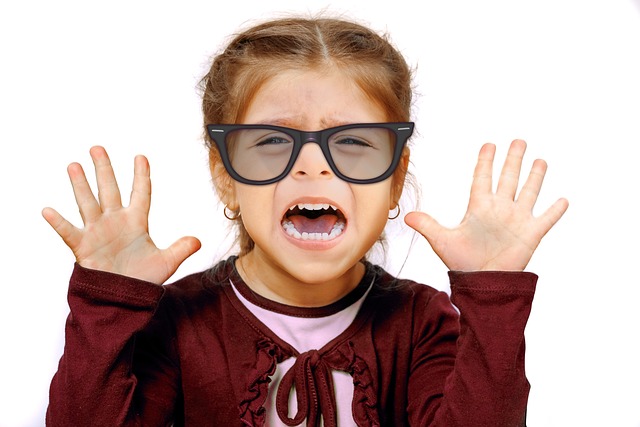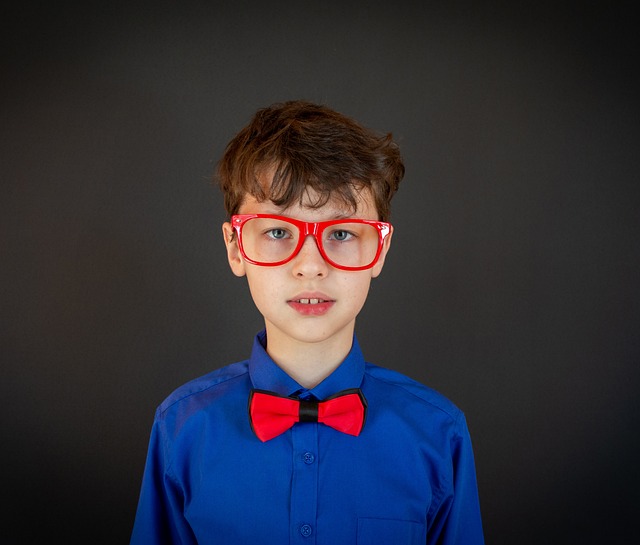As your child grows, his eyesight changes rapidly. This development is completely normal. It is still necessary to be attentive and carefully respect the screenings recommended in your child’s health record at the 9th and 24th months. But beware! Too many vision problems are detected late, at the risk of compromising vision in one eye and, for school children, learning to read and write. A knowledgeable parent…
What every parent should know
At school, 90% of learning involves vision. Under these conditions, it is not surprising that children with a visual impairment are more penalized than children with good eyesight.
Since they themselves are not aware of seeing badly – they have always seen this way – don’t wait for them to complain before reacting. See the ophthalmologist before entering primary school (or earlier in the event of suspicious signs), particularly if you or your partner have vision problems because heredity can play a role. Finally, don’t neglect certain clues that should catch your eye…!
His progress step by step
At birth
A newborn sees, but not like an adult. He is able to distinguish an object of 5 mm at 60 cm from him or an object of 1 cm at 1.20 m, another of 2 cm at 2.40 m, etc. (which corresponds to a visual acuity of 1/20th whereas a normal adult has on average 10/10th). In other words, a newborn can distinguish a face, without seeing the details. Moreover, a bit like the horse that wears blinders, the newborn can only see what is happening in front of him. As for the colors, he does not appreciate them yet and sees in a palette of grays…
At three months
His vision improved slightly. Now, he is able to distinguish a 2 mm object placed 60 cm from him (i.e. a visual acuity of 1/10th). From his cradle or his deckchair, he sees everything in front of him, even if everything is not yet very clear. He has spotted a few objects that interest him (his bottle, a security blanket, and the faces of his loved ones) and is agitated in their presence. At three months, he is also able to visualize bright colors.
At four months
This is the period from which he becomes able to appreciate the relief and therefore to adjust the position of his hand in relation to an object he wishes to catch.
At six months
His vision continues to improve: he has 2/10th, which is four times better than when he was born. That’s enough for him to notice the few crumbs lying around on the floor. He now distinguishes the primary colors, can follow any moving object, and sees the reliefs better and better, proof that the images that come to him from the right eye and the left eye are beginning to overlap.
At nine months
With 3/10th, he could read the newspaper if he understood the language of letters! And his field of vision expands as he begins to see to the sides.
At twelve months
With 4/10th, he sees eight times better than at birth. His vision is panoramic, like ours, and he discerns movements perfectly. Likewise, it sees colors well, including pastel shades.
Articles to find out more
– His sight is changing (0-3 years)
– Vision screening (3-6 years)
– Checking his sight (6-8 years)
Signs to alert you
He has a white reflection in the pupil
Doctors look for it from birth and on the 8th-day examination, because the sooner detected, the better. Indeed, this reflection can announce a pathology requiring a lot of attention, such as a congenital cataract. Fortunately, this is a rare event: 1.25% of newborns are affected and, moreover, medicine has made significant progress in their management.
He always looks the same way
Do not hesitate to consult the ophthalmologist if you notice, for example, that when you call your little one, he always turns to the same side to look at you (the same if he wants to observe something spontaneously). Another easy-to-do “home test”: hide one eye with your hand to see how it reacts, then repeat the experiment with the other eye. If his vision of the eyes is about the same, he tries to move your hand away, but nothing more. Whereas if one of his eyes hardly sees, he protests energetically when you hide his only eye which sees clearly (but he says nothing when you hide his deficient eye since it is not useful to him).
He squints
Before 3 months, it does not mean much, but if the strabismus persists beyond, it is better to consult. Ditto if the child always turns his head to the same side to look, raising fears of very poor vision in one eye (amblyopia). This increases the risk of strabismus because by trying to focus the image he sees cloudy, the affected eye tends to converge towards the other. It also takes the fold of no longer “working”, the brain giving preference to the images received of better quality. However, if the visual area of the deficient eye is not stimulated, the loss of vision of the amblyopic eye can be definitive. This is why it is necessary to act without delay: if the problem is spotted early enough – before the 3 years old – the chances of this eye seeing one day is excellent (close to 100%), whereas if nothing is done before the age of 6, the chances decrease sharply. A real mess, especially since the treatment is well established: glasses with a corrective lens on the side of the amblyopic eye and a mask on the side of the healthy eye (to force the other eye to work).
He is distracted in the late afternoon
The trick is to blame it all on end-of-day fatigue, especially if you get up early because of your work schedules, when in fact your child is not distracted or bothered by a lack of concentration, but simply farsighted! As his eyes are a little too short, images of close objects are formed behind his retina. Consequence: he sees blurry unless he makes a permanent effort to bring the images into focus. In the long run, it’s tiring. And that’s why “distractions” and headaches are more frequent at the end of the day… whereas, with a pair of corrective glasses, it’s won!
He confuses some letters
Before fearing possible dyslexia, first, see the ophthalmologist. A fortiori if the confusion concerns the letters and numbers O, S, D, Q, G, 6, 9, and 8. Indeed, this type of error suggests that your child has astigmatism. Astigmatism is due to a deformation of the cornea, which is the surface membrane of the eye. Oval instead of round, a deformed cornea leads to blurred vision both near and far. And this disorder can be added to others…
He blinks or frowns to look away
This can evoke myopia, appearing willingly around 8 years. Because the eye is too long, images of distant objects are formed too far ahead of the retina, and distance vision is blurred. Other signs can make you think of it, such as difficulties when it comes to copying the table or the fact of drawing or writing, with your nose glued to the notebook. So many warning signs that you can no longer ignore!
Nathalie Szapiro, doctor
ASNAV, National Association for the Improvement of Sight, is a private association that serves the general interest. It was created in May 1954 by eye optics professionals. ASNAV has a dual mission of prevention and information: prevention through interventions with health actors and information for the general public. The Association is mobilized around themes of everyday life which make it possible to make the whole population aware of the need for prevention in order to maintain a quality vision. It is now an institution recognized for its action in favor of prevention for the visual health of the French. It is legitimate to act with the competent authorities for any mission concerning the development of information and the prevention of visual impairments.
At four years old, he sees almost like an adult
It is only at the age of 4, that a child (without visual impairment) sees more or less like an adult: he then has 10/1010ths – which means that he is able to perceive two points only 3 mm apart from each other, 10 meters away from him – a wide field of vision, good color, and relief vision. There have therefore been major changes since birth where the baby saw only in front of him, in a palette of gray and in a rather blurred way!
Misconceptions: does it damage the eyes or not?
• Darkness: no, contrary to popular belief, watching television, reading or writing in the dark has no effect on vision.
• Drafts: again, no offense to popular belief, squinting in drafts has never caused permanent strabismus!
• The computer: it is especially bad for weight – because during this time the child does not have any physical activity – and sleep, if the child plays on his screen instead of sleeping, but the computer or the consoles can in no way cause visual disturbances, it is proven. On the other hand, it may reveal a visual defect that has gone unnoticed until now because the screen is very demanding on the eyes. Eyes that sting, cry or have headaches after time spent on the screen are therefore rather a good warning sign.
• Myopia: the child sees poorly from afar and sees well up close.
• Hyperopia: the child has difficulty seeing up close and sees well from afar.
• Astigmatism: the child sees imprecisely both near and far. He can confuse similar letters or numbers: h, m, and n; i, l, and t; 8 and 0…



Leave a Reply